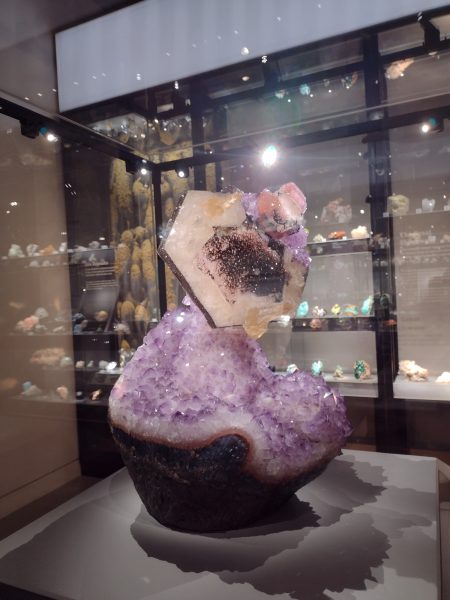New year will bring historic exhibit, annual gem show to Tucson
Lindsey Ray Johnson, El Inde Arizona

Tucson is known for involving science within the community through the annual winter Gem and Mineral Show and a host of astronomy events.
All of this has earned the University of Arizona the designation as the No. 1 Astronomy Program in the United States.
The Alfie Norville Gem & Mineral Museum, 115 N. Church Ave. downtown, showcases many rare gems and minerals that are loaned to the museum.
The most recent example will be the OSIRIS REx sample from NASA’s OSIRIS-REx Asteroid Sample Return mission, started in 2018 and completed on Sept. 24. No date has been announced, but the sample is expected to be on display at the museum.
The mission is the first to collect a sample from an asteroid and bring it back to Earth for scientific study and research, said Dante Lauretta, a UA regents professor of planetary science and cosmochemistry who leads the OSIRIS REx Sample Return Mission.
During a presentation at the museum on Nov. 30, Lauretta said the sample was originally expected to be on exhibit at that time, but “challenges in Houston” delayed its arrival. The sample, he said, will eventually be “on display for a long-time in Tucson.”
According to Lauretta, the mission went to an asteroid named Bennu to bring back a sample to test for its physical and chemical properties.
“This is really the most important part of the mission,” Lauretta said.
The test results may determine the origins of life and help to expand future space exploration and economic development.
For information on the Museum and when the sample will arrive, visit Alfie Norville Gem & Mineral Museum at gemandmineralmuseum.arizona.edu.
Other things that make Tucson an astronomy/mineral lover’s paradise:
- The Astronomy and Steward Observatory on campus hosts a public evening lecture series every semester on topics including space, stars and planets. Astronomer and senior lecturer Thomas Fleming said those attending can stick around to observe the night sky through the Steward Observatory Dome for no charge.
Fleming said the lecture series is marking its centennial anniversary this year. The next lecture will be on Jan. 22. For details, visit as.arizona.edu.
- Tucson is famous for its annual Gem and Mineral show, with shows running throughout mostly downtown from Jan. 26-Feb. 11. For those studying geosciences or fascinated by the subject, the weeks-long show is a gold mine.
“This attracts a lot of people, and because it is not just of purely scientific interest, many more people come and might be intrigued in learning more,” said Benjamin McNabnay, who studied geoscience at the University of Arizona and participated in the Society of Earth Science Students club that hosts a junior education table at the show each year.
“I don’t think many people fully understand how far geosciences reaches and its many practical applications in addition to academic ones,” McNabnay said. “Geoscience has so much to do with daily life, and especially in Arizona, I’m very glad that all of these opportunities are available.”
Tucson is one of the top places in the world to study geoscience, and the unique landscape can be found right outside your door, McNabnay said.
“Tucson has excellent hiking, and my favorite spot to go is Sabino Canyon,” he said. “You can really get up close and personal with the trails and geology, and the water feature is nice to interact with in a desert environment.”
Vendors selling everything from crystals to rocks and jewelry at the 2024 show will begin setting up tents along Interstate 10 downtown in the coming weeks. A number of smaller shows are held beginning Jan. 26, but the big show is Feb. 8-11 at the Tucson Convention Center, 260 S. Church Ave. To learn more, visit tgms.org/show.
El Inde Arizona is a news service of the University of Arizona School of Journalism.
